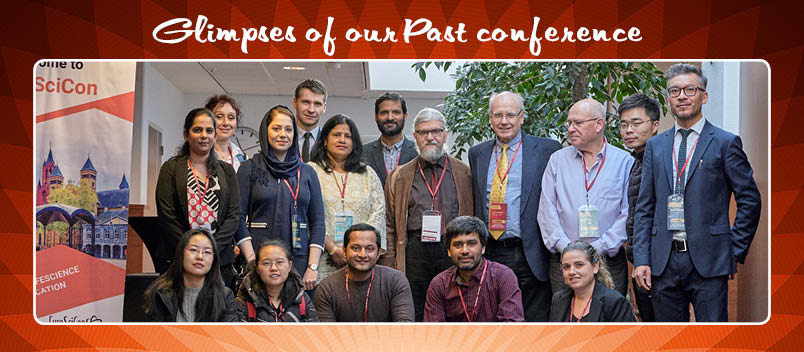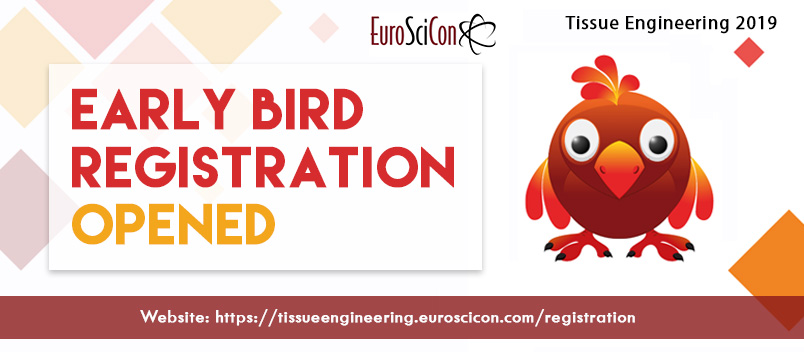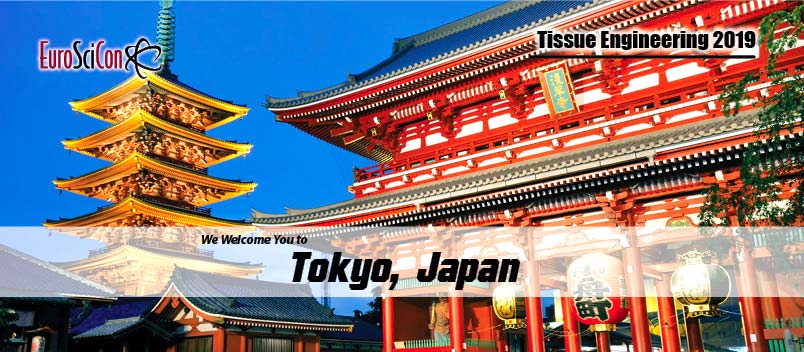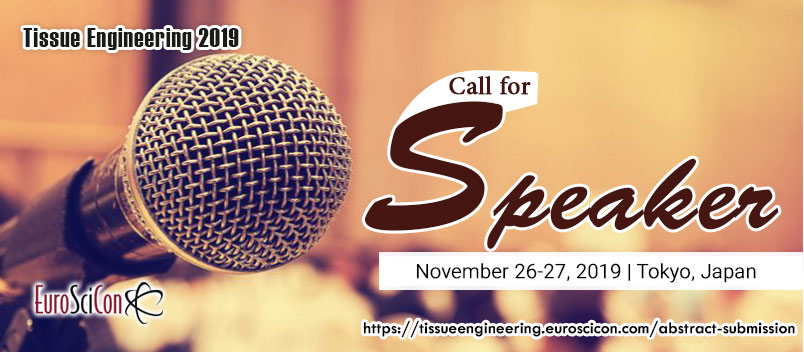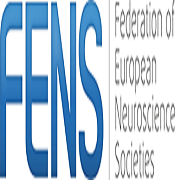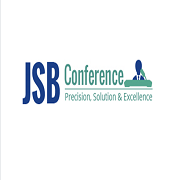Tissue Engineering 2019
About Conference
In continuation to 1st successful past scientific meetings 2nd International Conference on Biomaterials and Tissue Engineering will be held on November 26-27, 2019 in Tokyo,Japan.
EuroSciCon suggests every single person to attend "Tissue Engineering 2019” on November 26-27, 2019 at Tokyo,Japan which merges brief keynote introductions, speaker talks, Exhibitions, Symposia, Workshops.
These Tissue Engineering Conferences will gather world-class educators, researchers, analysts, Biotechnologist, Young Researchers working in the related fields to consider, exchange views and their experiences before an extensive worldwide social occasion of individuals. The social gathering warmly welcomes Presidents, CEO's, Delegates and present day experts from the field of Biomaterials,Tissue Engineering, Biomedical Engineering and other pertinent organization positions to take an interest in this sessions, B2B get together and board talks. The assembly of this event will be revolving around the topic “A Step Ahead-Global Welfare from advanced research in Biomaterials and Tissue Engineering.”
EuroSciCon is the longest running independent life science events company with a predominantly academic client base. Our multi professional and multi-specialty approach creates a unique experience that cannot be found with a specialist society or commercially. EuroSciCon are corporate members of the following organizations: Royal Society of Biology, IBMS Company.
This global Tissue Engineering meetings give the chance to Biotechnologists, clinicians, young researchers, specialists and analysts throughout the world to assemble and take in the most recent advances in the field of Biomaterials and Tissue Engineering and to trade innovative thoughts and encounters.
• 2 days of scientific exchange
• 100+ abstracts submitted
• 20+ scientific sessions
• 50+ worldwide professionals
• 80+ healthcare experts
Tissue Engineering 2019 is the yearly gathering directed with the help of the Organizing Committee Members and individuals from the Editorial Board of the supporting Biomaterials and Tissue Engineering related journals.
Reason to attend?
This International Tissue Engineering Conferences is relied upon to give young researchers and scientists a platform to present their revolutions in the field of Biomaterials and Tissue Engineering. This conference invites Presidents, CEO's, Delegates and present day specialists from the field of Biomaterials,Tissue Engineering,Biomedical Engineering and other pertinent organization positions to take an interest in this sessions, B2B get together and board talks.
About City :
Tokyo, authoritatively Tokyo Metropolis is one of the 47 prefectures of Japan, has filled in as the Japanese capital since 1869. As of 2014, the Greater Tokyo Area positioned as the most crowded metropolitan territory in the world. The urban zone houses the seat of the Emperor of Japan, of the Japanese government and of the National Diet. Tokyo shapes some portion of the Kanto district on the southeastern side of Japan's primary island, Honshu, and incorporates the Izu Islands and Ogasawara Islands. Tokyo was some time ago named Edo when Shogun Tokugawa Ieyasu made the city as his central command in 1603. It turned into the capital after Emperor Meiji moved his seat to the city from Kyoto in 1868; around then Edo was renamed Tokyo. Tokyo Metropolis framed in 1943 from the merger of the previous Tokyo Prefecture and the city of Tokyo.
The territory part of Tokyo lies northwest of Tokyo Bay and measures around 90 km (56 mi) east to west and 25 km (16 mi) north to south. The normal rise in Tokyo is 40 m (131 ft). Chiba Prefecture outskirts it toward the east, Yamanashi toward the west, Kanagawatoward the south whereas Saitama toward the north. Mainland Tokyo is additionally subdivided into the unique wards and the Tama zone extending westwards.
Additionally inside the regulatory limits of Tokyo Metropolis are two island chains in the Pacific Ocean straightforwardly south: the Izu Islands, and the Ogasawara Islands, which extend in excess of 1,000 km (620 mi) far from the territory. Under Japanese law, Tokyo is assigned as a metropolis. Its managerial structure is like that of Japan's different prefectures. The 23 extraordinary wards, which until 1943 established the city of Tokyo, are self-governing municipalities, each having a chairman, a committee, and the status of a city.
Notwithstanding these 23 extraordinary wards, Tokyo likewise incorporates 26 more urban areas, five towns, and eight villages, every one of which has a local government. The Tokyo Metropolitan Government controls the entire city including the 23 uncommon wards and the urban communities and towns that comprise the prefecture Tokyo Metropolis. It is going by a freely chosen senator and metropolitan get together. Its headquarters are situated in Shinjuku Ward
Tokyo, the capital city of Japan, is likewise home to the Imperial Palace and the seat of Government and Parliament. In East-Central Honshu, the biggest of Japan's principle islands, this profoundly populated city is well worth investigating. One of the world's most present-day urban areas as far as its foundation and plan - due to a great extent to the 1923 quake and the annihilation of Tokyo has the title of the world's most costly city in which to live; obviously it is also one of the simplest to get around on account of its brilliant rail and tram systems. The way of life of Tokyo is well known for its culture and best attractions, including historical centers, celebrations, globally noted cooking, and elite athletics clubs, including baseball, football, along with conventional Japanese interests like sumo wrestling. It's likewise a city which is rich in music and theater, with various settings highlighting everything from Japanese to current shows, ensemble symphonies, and pop and shake shows. Find the best places to visit in the city with our rundown of the best attractions in Tokyo.
- Tokyo Disney Resort
- Tokyo Disneyland
- Meiji Shrine
- Tokyo DisneySea
- Shinjuku Gyo-en
- Ghibli Museum
- Chichijima
- Senso-Ji
- Tokyo Tower
- Tokyo Imperial Palace
- Ueno Park
- Tokyo Metropolitan Government Building
- Rainbow Bridge
- Tokyo National Museum
- National Museum of Nature and Science
- Mount Takao
- Hamarikyu Gardens
- Edo-Tokyo Museum
- Tokyo Skytree
- Inokashira Park
- Mount Mitake
- Miraikan
Session and Tracks
Track 1 : Biomaterials
Biomaterials-be it natural or synthetic, alive or lifeless, are those materials that are made up of multiple components and have the capability to interact with biological systems. Biomaterials are generally used in medical applications to augment or replace a natural function. The most commonly used biomaterials are polymers. All biomaterials meet certain criteria and regulatory requirements before they are assured for use in medical applications Biomaterial Science has a broad scope that covers the fundamental science of biomaterials through to their biomedical applications.
- Advanced hydrogels
- ·Biofunctional hydrogels
- ·Injectable matrices
- ·Polymers as Biomaterials
- ·Biomimetic Biomaterials
- ·Degradable and Resorbable Biomaterials
- ·Adsorbed Protein on Biomaterials

Track 2: Tissue Engineering
Tissue engineering is best defined as the use of a combination of cells, engineering materials, and suitable biochemical factors to improve or replace biological functions. Tissue engineering uses sets of methods that helps to replace or repair damaged or diseased tissues with natural, synthetic, or semisynthetic tissue mimics. These mimics can either be fully functional or will grow into the required functionality.
-
Cell isolation
-
Cell seeding
-
Scaffolds for Tissue Engineering
-
In vitro culturing
-
Cell harvesting

Track 3: Biomedical Engineering
Biomedical engineering is also known as a bioengineering. This field is the bridge between medical and engineering, combining the problem solving and designing skills of engineering with medical biological sciences to advance health care treatment, therapy and including diagnosis. It is the application of engineering principles and design concepts to biology and medicine for healthcare purpose.
-
Biomechanics
-
Biomedical optics
-
Molecular and Cellular Engineering
-
Genetic engineering
-
Neural engineering
-
Pharmaceutical engineering
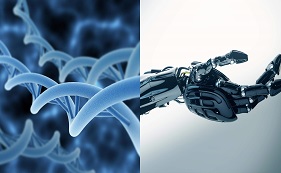
Track 4 : Bone Tissue Engineering
Bone and ligament both are the most critical segments in the skeleton framework, giving the significant structure of the assortment of vertebrates and giving protection to delicate tissues. Tissue building of musculoskeletal tissues, particularly bone and ligament, is a quickly creating field. In bone, innovation has focused on bone unite substitute materials and the improvement of biodegradable frameworks. As of now tissue building systems have included cell and quality treatment. The accessibility of development factors and the growing learning base concerning the hereditary qualities and direction of bone arrangement have grown new materials for tissue-building applications.
-
Bone Tissue Engineering
-
Bone Scaffolds
-
Bone Grafting
-
Mechanical Stimulation- Bone Regeneration
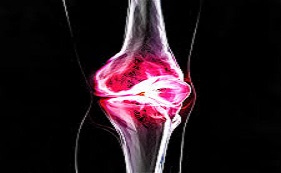
Track 5: Grafts in Tissue Engineering
Grafting is a surgical procedure to move tissue from one site to another on the body, or from another creature, without bringing its own blood supply with it. Instead, a new blood supply grows in after it is placed. Different types of grafting contains skin grafting, bone grafting, vascular grafting and ligament repair. Skin grafting is most common used grafting technique. Wounds, burns and scars have been dealt with this efficiently. Bone transplantation is a bit difficult but well-known process to replace damaged bones. In Recent years cardiovascular disease are being combatted with the development of a tissue-engineered vascular graft (TEVG). The various approaches to generate TEVGs are scaffold-based methods and tissue self-assembly processes. The channels for vascular grafting are autologous arteries or veins. Synthetic vascular grafts are also available in the market nowadays.
-
Wound healing and repair
-
Cartilage replacement
-
Bone replacement
-
Hip replacement

Track 6 : Tissue Engineering and Regenerative Medicine
Regenerative medicines tries to supplant tissue or organs that have been harmed by disease , congential issues,or trauma versus the current clinical system that spotlights essentially on treating the manifestations. The tools used to understand these results are tissue designing, cell treatments, and therapeutic devices and artificial organs.
-
Cellular Therapies
-
Organ Transplantation
-
Clinical Translation
-
Periodontal Therapy
-
Innovations Regenerative and Tissue Engineering
-
Medical Devices And Artificial Organs
-
Regenerative Medicine Approach
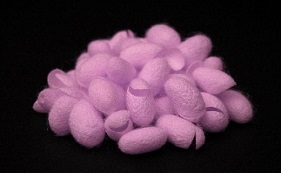
Track 7: Organ- on-a- chip
An organ-on-a-chip (OOC) is a multi-channel 3-D microfluidic cell culture chip that simulates the activities, mechanics and physiological response of entire organs and organ systems, a type of artificial organ.
-
Liver-on-a-Chip for Toxicity Screening/Toxicology Studies
-
Lung-on-a-Chip
-
Nerve-on-a-Chip
-
Gut-on-a-Chip
-
Immune System-on-a-Chip
-
Organ-on-a-Chip Applications for Drug Discovery
-
Modeling Diseases-on-a-Chip
-
Cancer on chip
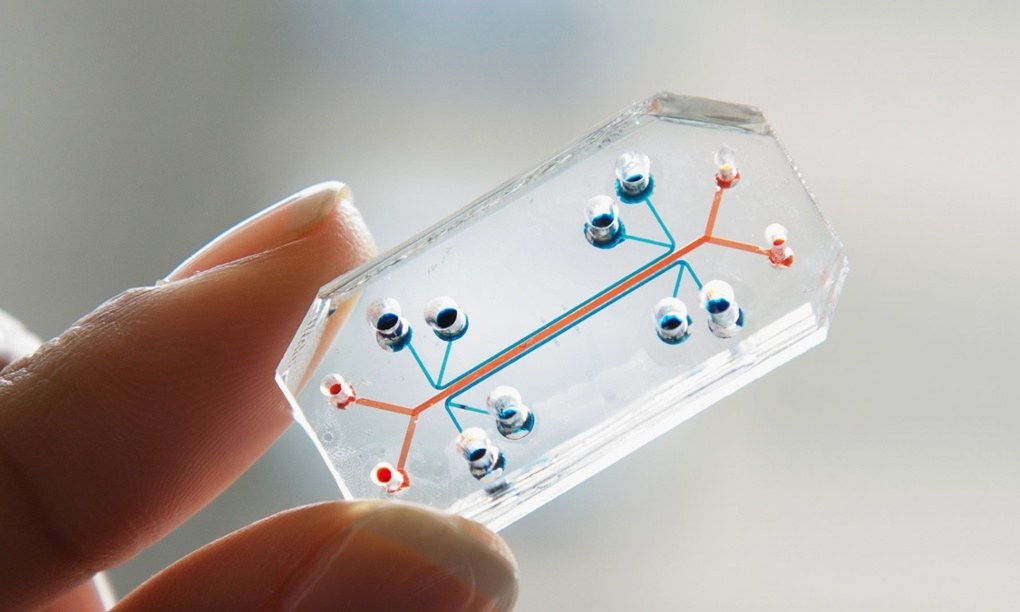
Track 8: Biofabrication
Biofabrication research leads to the fabrication of advanced biological models, non-medical biological systems and medical therapeutic products. It is an automated production of organs and tissue that deals with health challenge in medicine. Biofabrication technology is a platform for a broad range of tissues such as nervous, cartilage, blood vessels and skin, as well as complete organs such as kidney, liver and the heart. It is used for 3D printing which is also known as the theory of additive manufacturing. Its main objective is to merge cells and fibres into an independent construct that can substitute wounded tissue.
-
Biochemical signaling
-
Additive manufacturing technologies
-
Limits of bone bio fabrication
-
Clinical translation
-
Stereo lithographic process
-
Laser sinterings
-
Validations
-
Biofabrication of Bone Tissue Engineering

Track 9 : 3D bioprinting of Biomaterials
3D Bioprinting is the way toward making three-dimensional structure of biomaterials by meusing computer conrol. As for the nano-scale measurements the biomaterials are arranged into three sorts as-Nano-molecule (3D), Nano-fiber(2D) and Nano-sheet (1D). 3D bioprinting is the arrangement of various cell designs by utilizing printing strategies alongside the layer-by-layer technique to create tissue mimetic structures with no damage in cell work that can be additionally utilized as a part of tissue building. Electrospinning innovation implies deposition of polymer nanofibers on an object by utilizing high voltage to a fluid polymer arrangement. Bioprinting helps in the examination of medications and pills by printing tissues and organs. It is likewise utilized for smaller scale device and microarrays.
-
Layer-by-layer: 1, 2 and 3D nano assembly
-
In 3D bio-printing
-
Electrospinning and allied technologies
-
High-energy handling of biomaterials
-
Hierarchical three dimensional structures
-
Use in micro devices and microarrays
-
Combinatorial approaches to biomaterial design
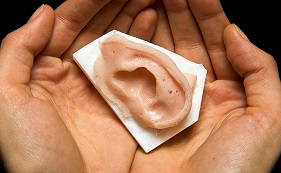
Track 10 : Dental Biomaterials
Dental Biomaterials incorporate both the utilization of regular and manufactured dental tissues like veneer, cementum, dentin and polymers, composites, ceramics. Dental bio materials are utilized to repair decayed teeth. These biomaterials are of various kinds i.e. orthodontics, supports, inserts, and so forth. Orthodontics is a piece of dentistry that prompts the arrangement of teeth and jaws to enhance oral wellbeing. Props are principally utilized as a part of orthodontics to fix teeth and to treat anomalies in teeth. Dental inserts are the barrel shaped structures made up of titanium, which is utilized as a substitute for any missing teeth. Prosthesis implies a device intended to supplant a missing piece of the body Diseased or missing eyes, arms, hands, legs, or joints are supplanted by utilizing prosthetic devices. False teeth are known as dental prostheses.
-
Implants and prosthesis
-
Orthodontics: Braces
-
Advanced surgeries and complex cases
-
Restorative implants
-
Orthodontics and craniofacial research
-
Implant surgery

Track 11 : Polymer Biomaterials
Polymers are the macromolecules accomplished from different rehashed subunits. Polymers are utilized as biomaterials and that can be of the accompanying sorts, i.e., Natural Polymers: Chitosan, Collagen, Alginate. These characteristic polymers are utilized for sedate conveyance, wound dressing and tissue designing. Engineered Polymers like Polyvinylchloride (PVC),Polypropylene, Polymethyl methacrylate are utilized as a part of inserts, therapeutic expendable supplies, dressings, and so on. Biodegradable Biomaterials: Polyactide, Polyglycolide, and so on. It is profitable as it recovers tissue and does not leave remaining follows on implantation. For the most part utilized for tissue screws, ligament repair and medication conveyance frameworks. Biopolymers are those which are built up from the living life form example DNA, RNA, proteins, sugars, and so on. It can likewise be utilized as packaging material. Polymer composites are broadly utilized for preparing medical implants.
- Biodegradable polymers as Biomaterials
-
Implanted polymer composites
-
Polymers as Biomaterials
-
Biopolymers for food packaging
-
Micro and nano blends based on natural polymers
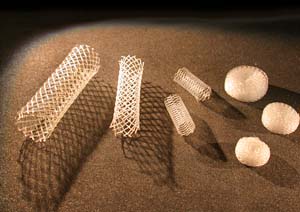
Track 12: Scaffolds for Tissue Engineering
Tissue engineering along with regenerative medicine can be used to create ‘Scaffolds’ in the human body which are used to support organs and organ systems that may have been damaged due to an injury or disease. Fundamentally, this process involves the in vitro construction of a patch (or a graft). This patch is made from a combination of stem cells and an artificial extracellular matrix (biomaterial). The engineered patch can then be surgically implanted into affected areas of the body that need reconstruction.
Scaffolds must be capable of performing the following functions:
-
Allow cell attachment and migration
-
Deliver and retain cells and biochemical factors
-
Enable diffusion of vital cell nutrients and expressed products
-
Exert certain mechanical and biological influences to modify the behaviour of the cell phase
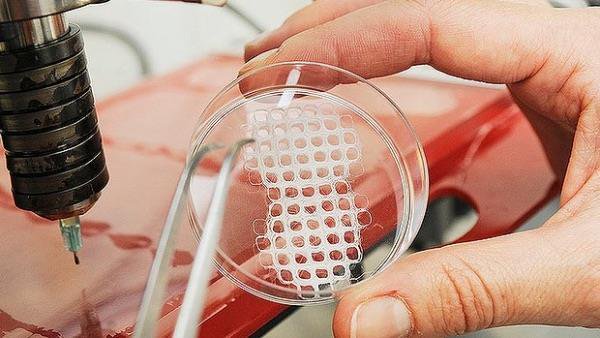
Track 13: Aesthetic Skin Rejuvenation
Aging is the successive or dynamic change in a living being that prompts to an increased risk of debility, disease, and death. Skin loses its juvenile luster with age. Permanent pimples, wrinkles and texture irregularities are very common. With advent of cosmetic surgery this can be reversed. The process is generally based on layer by layer removal of the surface cells and the new cells are thus formed.
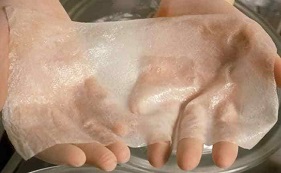
Track 14 : Artificial Organs
A Bioartificial organ is a designed device or tissue which is consolidated into human body to supplant a characteristic organ .It joins biomaterials and natural cells for completely substitution of patient disappointment organs. Example of bioartificial organ are bioartificial kidney device, joining biomaterials and kidney epithelial cells for enhanced blood detoxification, bioartificial pancreas device, consolidating exemplification of pancreatic cells for treatment of diabetes, bioartificial lungs for considering lung recovery.
-
prosthetic Cardiac Valves
-
Artificial Lung (oxygenator)
-
Bio Artificial Windpipe
-
Artificial Kidney (Dialyser membrane)
-
Dental Implants
-
Artificial Blood
-
Artificial Heart
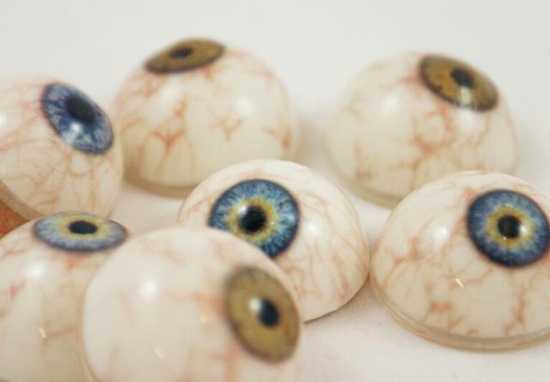
Track 15 : Tissue Repair and Regeneration
Tissue Regeneration implies regrowing or re establishing the harmed or missing organ part from the rest of the tissue. Numerous embryonic tissues, for example, the spinal cord, heart, and limbs, have some regenerative potential and may use systems that can be exogenously initiated in adult tissues. By utilizing smaller molecular and cell pathways embryonic improvement can be restated by utilizing Tissue Regeneration.
-
Tissue Biomarkers
-
Cellular & Molecular mechanisms
-
Translational Diagnostics
-
Connective Tissue Deposition
-
Advancements in Biomedical & Tissue Engineering Techniques

Track 16: Biomaterials for Stem Cell Therapy
Stem cell therapy is developing fast in the field of biomaterials. Combining stem cells with biomaterial scaffolds provides a promising response in engineering tissues and cellular delivery. Recent stem cell technologies have opened several ways for biomaterial research, such as developing disease models, drug development, tissue regeneration and development of functional organoids. The process also aim for development of adult stem cell-based tissue engineered biomaterial implants and organoids. This technique develops the cells to generate and use induced Pluripotent cells (iPS) from differentiated cells.
-
Synthetic Polymers
-
Embryonic stem cells
-
Source of Stem cells
-
Treatment of Diseases
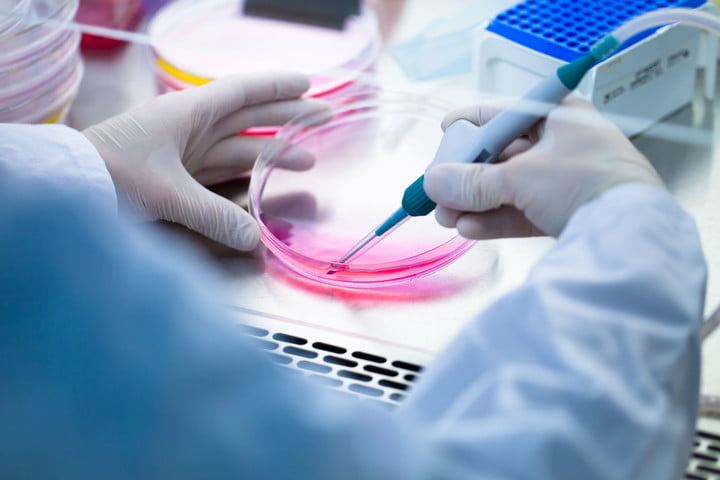
Track 17: Soft Tissue Replacement
Soft tissue inserts applications include building standards, the execution of an embedded device inside the host which principally relies on both the sort of materials utilized and the manufactured outline of the device or embed. The underlying determination of material ought to be founded on sound materials designing practice and additionally prerequisites. The final material Selection judgment on the appropriateness of a material relies on in-vivo clinical execution perception of the embed for particular time span. The necessity of in-vivo perception speaks to significant issues in the choice of proper materials for use inside human body, the execution of an embed which may rely upon the manufacture plan instead of the materials, expertise of the specialists and the earlier state of patients.
-
Cellular Interaction of Biomaterials
-
Growth and Differentiation Factors
-
Biomimetics
-
Stem Cell Treatment
-
Scaffold Product
-
Biological Active Molecules

Track 18 :Tissue Regeneration Using Nanotechnology
The current combination of developing nanotechnology into tissue science and biomedicine has achieved an extent of creative nano building endeavors for the repair and recovery of tissues and organs. Nano patterns alone can direct the differentiation of stem cells without involvement of exogenous soluble biochemical factors. This control of cell conduct by nanotechnology in tissue engineering is one of the case exhibiting the huge utilizations of nanotechnology in biomedicine.
-
Effects of Guided Tissue Regeneration
-
Nano Drug Delivery Systems
-
Nanotechnology in Regeneration of Complex Tissues
-
Molecular Nanotechnology- Medical Applications

Track19: Biomaterials for Implants
Implant or Implantation refers to insertion of biological material into the body for diagnosis or therapies. Biomaterial is generally used in dental Implants. There are different classification of dental implants they are based on Surface of implant, Implant design, the Type of material used and Attachment mechanism.
-
Metallic Implants
-
Ceramic Implants
-
Polymeric Implant
-
Dental Implants
-
Breast Implants
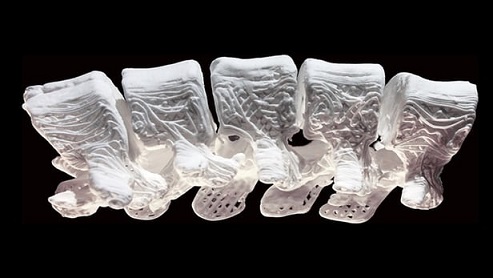
Track 21: Tissue Engineering and Cancer
Cancer is the most dreaded disorder. The exact cause and mechanism is yet not known. Diverse research is going on find an answer. Tissue engineering has been inter-related with cancer to find some ways. Using tissue engineering to comprehend cancer can be done by fabricating 3D constructs that will mimic tumor cells and help us know how cancer cell grow, spread and metastasize at the biological level. For testing drugs, 3D structures are more reliable. One approach has been to engineer tumors and understand mechanism of drugs administered on then in vitro. Tissue engineered cancer models can be used as test therapies.
-
Tissue Engineering Platform For Cancer Research
-
Tumor Cell interaction with Bone
-
Drug Delivery with Tissue Engineering Techniques
-
Newly detected Cell types with a potential for Tissue Engineering and Cancer Research.
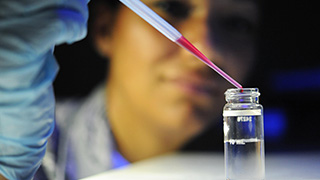
Track 22 : Biomaterials in Delivery Systems
Biomaterials plays an important role in delivery systems mainly in drug delivery. Numerous kinds of drug delivery systems, surgical implants, wound closure devices, artificial organs are usually dependent on biomaterials. Biomaterials are helpful in gene delivery that in due course make transgene expression and tissue growth along with regeneration of tissues. Immunomodulation i.e., modulating or altering several features of immune system, the power and competence of regenerative medicine therapies can be enlarged. At present, hydrogels are termed as the smart drug delivery system, that are often used as sustained drug release systems, which has importance in the healing of cancer. Extracellular media or vesicles are used for the macromolecular drug delivery. Biomaterials can also be used for islet delivery, for imaging, etc.
-
For islet delivery
-
In gene therapy
-
Polymeric hydrogels for drug delivery
-
Extracellular media for therapeutic delivery
-
Tissue targeting nanoparticles
-
Drug-processing devices
-
Theranostic delivery
-
RNAi-enabled biomaterials
-
Immunomodulation in regenerative medicine
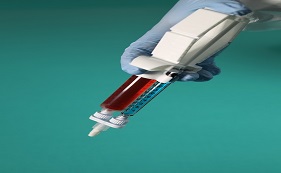
Track 23: Biophotonics and Biomedical Optics
Biophotonics is the investigation of optical procedures in human organic frameworks, which happens normally and in bioengineered or biosynthesized materials.. The imperative element of this field is imaging and recognizing cells and tissue. It likewise includes infusing fluorescent markers into an organic framework to track cell elements and medication conveyance. Biophotonics is correspondingly used to examine organic materials or materials with resources like natural material, i.e., scrambling material, on a tiny or plainly visible scale. On the minute scale basic applications include microscopy and optical intelligence tomography. On the plainly visible scale, the light is diffuse and applications regularly manage diffuse optical imaging and tomography. Biomedical optics emphasizes on the outline and utilization of cutting edge optical procedures to determine issues in drug and science.
-
Clinical and Biomedical Spectroscopy and Imaging
-
Optical Coherence Tomography and Coherence Techniques
-
Photonic Therapeutics and Diagnostics
-
Medical Laser Applications and Laser-Tissue Interactions
-
Biomedical Spectroscopy, Microscopy, and Imaging
-
Clinical and Biomedical Spectroscopy and Imaging
-
Tissue Optics, Laser-Tissue Interaction, and Tissue Engineering
-
Nanophotonics
-
Neurophotonics, Neurosurgery, and Optogenetics
-
Bioluminescense
-
Optical Trapping Applications
-
Optical Molecular Probes, Imaging and Drug Delivery
-
Bio-Optics: Design and Application
-
Biosensing and Bioimaging
-
Biofuels

Track 24: 3D Plant Tissue Engineering
Late advances applying mammalian tissue building to in vitro plant cell culture have effectively refined single plant cells in a 3D microstructure, prompting the revelation of plant cell practices that were already not visualized. Creature and plant cells share various properties that depend on a various levelled microenvironment for making complex tissues. Both mammalian tissue designing and 3D plant culture utilize customized frameworks that adjust a cell's conduct from the underlying culture utilized for seeding. For people, these methods are altering human services systems, especially in regenerative medication and malignancy thinks about. For plants, we foresee applications both in principal research to contemplate morphogenesis and for engineered science in the agri-biotech division

Market Analysis
Tissue Engineeering
The worldwide tissue designing business sector estimate was esteemed at around USD 5 billion out of 2016 and is relied upon to develop at a sound development rate. Developing capability of tissue building methods in the treatment tissue harms is supporting the market development.
View Research, Inc. As per the U.S. Focuses of Medicare and Medicaid, in excess of 900 million medical procedures are performed for bone reproduction or substitution. Expanding instances of unending illnesses, street mischances, and injury wounds is adding to the development being developed of tissue building arrangements. What's more, the subsidizing by government for the progressing research for tissue recovery is a noteworthy driver for showcase development.
At present utilized tissue repair arrangements incorporate medical procedures, restorative gadgets, and transplants. Tissue building methods have a gigantic potential to supplant the customary tissue repair choices. The mechanical progressions in 3D tissue building, including utilization of 3D bio-printers to plan in-vitro embeds and supplanting of developing life cells with proliferative immature microorganisms are probably going to support the market development in the years to come.
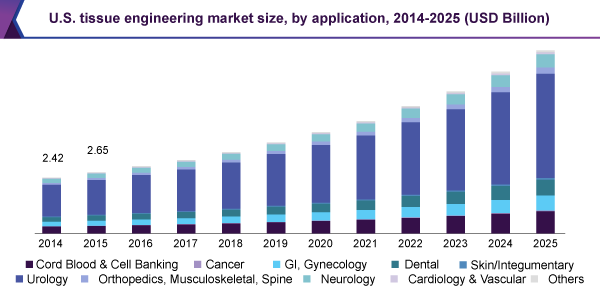
Further Key Findings From The Report Suggest:
- Orthopedics, Musculoskeletal, and Spine fragment held lion's share of the application income in the year 2014, because of research financing and new item advancements.
- Geistlich Pharma propelled bone-reaping instruments in 2016, for the gathering of autogenous bones. This item reestablishes bone volume and properties.
- Cardiology and vascular portion is probably going to develop at the speediest rate in the coming years, relating to quickly rising rate of cardiovascular illnesses because of way of life changes.
- The center around cardiovascular tissue designing arrangements is required to increment as cardiovascular issue is one of the real reasons for death over the globe.
- North America held dominant part of income share, because of quality of significant market players in the district, enormous R&D subsidizing, and developing base of geriatric populace.
- Zimmer Biomet procured Ortho Transmission for its spearheaded innovation, which could reestablish appendage amputee patients. With this securing, Zimmer can productively chip away at its present task got by the bureau of safeguard, U.S.
- Asia Pacific is probably going to grandstand the speediest development rate in the coming years, inferable from the remote direct interests in this area.
- In 2013, Japanese Ministry of Healthcare affirmed clinical preliminary for creating prompted pluriponent stem (iPS) cells for visual deficiency.
- Stryker Corporation, Medtronic, Inc., Organogenesis, Inc., Zimmer Biomet, Acelity, Athersys, Inc., Tissue Regenix Group Plc and RTI careful, Inc. are a portion of the key players working in this market.
- New item advancements, mergers and acquisitions are a portion of the methodologies embraced by these organizations to reinforce their market nearness.
- ReproCell, Inc. procured Biopta in 2015 to pick up advantage on Bipota's clinical system in the U.S and the UK.
Grand View Research has segmented the tissue engineering market based on application and region:
Application Outlook (Revenue, USD Million; 2012 - 2022)
- Cord Blood & Cell Banking
- Cancer
- GI, Gynecology
- Dental
- Skin/Integumentary
- Urology
- Orthopedics, Musculoskeletal, & Spine
- Neurology
- Cardiology & Vascular

Regional Outlook (Revenue, USD Million; 2012 - 2022)
-
North America
- U.S.
- Canada
-
Europe
- UK
- France
- Germany
-
Asia Pacific
- India
- Japan
- China
-
Latin America
- Brazil
- Mexico
-
Middle East & Africa
- South Africa
Biomaterials
The worldwide biomaterials advertise is assessed to reach $139 Billion by 2022, developing at a CAGR of 11.8% from 2016 to 2022. Metallic biomaterials portion is required to contribute altogether to the worldwide market income until 2022. North America held the main position in the worldwide market in 2015, and is relied upon to keep up its lead all through the investigation time frame.
This report thinks about the worldwide biomaterials advertise for the estimate time of 2016 to 2021. This market is relied upon to achieve USD 149.17 Billion by 2021 from USD 70.90 Billion of every 2016, at a CAGR of 16.0% from 2016 to 2021.
In view of material, the biomaterial advertise is portioned into metallic, polymer, fired and different biomaterials. The metallic biomaterial held the biggest offer in the worldwide market amid the conjecture time frame and it is anticipated to hold a piece of the overall industry of more than 35% by 2022. The polymer biomaterial is relied upon to witness the quickest development sought after amid the gauge time frame.
In light of utilization, the biomaterial showcase has been sectioned into cardiovascular, orthopedic, dental, plastic medical procedure, wound mending, ophthalmology, neurological condition and others. The cardiovascular section was all around the biggest application region of biomaterials amid the authentic period and by 2022, it is anticipated to hold a piece of the overall industry of 35%. The plastic medical procedure portion is the quickest developing application zone of biomaterials amid the gauge time frame.
Topographically, North America was the biggest supporter of the biomaterial advertise amid the chronicled period and by 2022, it is anticipated to hold a piece of the pie of 39%. The North American biomaterial industry is becoming fundamentally because of innovative headway, high human services use, developing geriatric populace and cardiovascular sicknesses and created medicinal services foundation. The expanding unending ailments predominance is likewise driving the use of biomaterials. Among the North American countries, the U.S. was the biggest market for biomaterials amid the authentic period. The market for biomaterials in the U.S. is relied upon to witness the quickest development sought after amid the figure time frame.

Past Conference Report(Tissue Engineering 2018)
The International Conference on Biomaterials and Tissue Engineering(Tissue Engineering 2018) hosted by Euroscicon took place at Mercure Hotel,Amsterdam,Netherlands during Dec 03-04, 2018. It was organized by Euroscicon and generous response was received from the Editorial Board Members of Euroscicon Journals as well as from eminent scientists, talented researchers and young student community. Researchers and students who attended from different parts of the world made the conference one of the most successful and productive events in 2018 from Euroscicon. The two day program witnessed thought provoking keynote and plenary presentations from experts in the field of Biomaterials and Tissue Engineering highlighting the theme, "Novel Trends and Advances in Biomaterials and Tissue Engineering”.
The meeting was carried out through various sessions, in which the discussions were held on the following major scientific tracks:
- Tissue Engineering
- Biomaterials and Bioengineering
- 3D Printing of Biomaterials
- Polymer Biomaterials
- Bone Tissue Engineering
- Soft Tissue Engineering
- Biomaterials for Stem Cell Treatment
- Dental Biomaterials
- Artificial Organs
- Biomaterials and Nanotechnology
The highlights of the meeting were the eminent lectures from
- Prof Lars Kamolz Peter, COREMED- Cooperative Centre for Regenerative Medicine,Austria
- Dr Lucy Vojtova,Central European Institute of Technology, Brno University of Technology, Czech Republic
- Dr Tomas Riedel, Institute of Macromolecular Chemistry, Prague
Tissue Engineering 2018 played an important role in promoting multidisciplinary interactions between science and medicine to enhance research in Biomaterials and Tissue Engineering. The program covered current and emerging research innovations in the field of Biomaterials and Tissue Engineering
We would specially thank the Moderator Dr Daniel Lopez Angulo, University of Sao Paulo,Brazil for his contribution towards the conference.
We are obliged to the various delegates from companies and institutes who actively took part in the discussions. We sincerely thank the Organizing Committee Members and Editorial board of Tissue Engineering 2018 for their gracious presence and continuous support throughout the proceedings of this event. With the valuable feedback and generous response received from the participants of the event, Euroscicon would like to announce the commencement of " International Conference on Tissue Engineering" during November 26-27, 2019 at Tokyo, Japan
Let us meet again @ Tissue Engineering 2019
Learn More
Tissue Engineering based Universities in Europe:
KTH Royal University | Tissue Engineering Conferences 2019 | Imperial College London | ETH Zurich | University of Cambridge | KU Leuven | University of Groningen | Regenerative Medicine Conferences | Trinity College Dublin | University of Sheffield | Pompeu Fabra University | Sorbonne University | Charles University | University of Pardubice | University of Copenhagen | Aalto University | University of Grenoble | Lille University | University of Lyon | Chimie Paris tech | University of Poitiers | Tissue Engineering Conferences | University of Pau and Adour Country | University of Reims Champagne-Ardenne | University of Strasbourg | University in Aachen | University of Bayreuth | Technical University of Berlin | Ruhr University Bochum | Sapienza University of Rome | University of Navarra | University of Oxford | University of Bologna | University of Antwerp | University of Bonn | University of Alicante
Tissue Engineering based Universities in USA:
West Chester University | Indiana University | Purdue University Indianapolis | State University of New York | Binghamton University | State University of New York | University of Arizona | Community Colleges of Spokane | Valencia College | Madonna University | San Jose State University | Virginia Commonwealth University | University of Alabama | Virginia Tech | St. John's University | Northern Arizona University | Arizona State University | University of Cincinnati | Colorado State University | Kent State University | Mississippi State University | Western Michigan University | Biomaterial Conferences | Montana State University |Texas A&M University | University of New Mexico | California State University | University of Maine | Wright State University | Old Dominion University | Long Island University | Loyola University Chicago | Troy University | Wichita State University
Tissue Engineering based Universities in Asia:
Nanyang Technological University | Tsinghua University | National University of Singapore | Peking University | University of Tokyo | Nanjing University | Kyoto University | Fudan University | University of Science and Technology of China | Osaka University | Korea Advanced Institute of Science and Technology | East China University of Science and Technology | Dalian University of Technology | Xiamen University | Jilin University | Nankai University | Tohoku University | National Taiwan University | Seoul National University | Shanghai Jiao Tong University | King Abdullah University of Science & Technology | Hong Kong University of Science and Technology | KAIST - Korea Advanced Institute of Science and Technology | City University of Hong Kong | Peking University | Chinese University of Hong Kong
Tissue Engineering based Societies:
European Tissue Engineering Society (ETES) | European Tissue Repair Society | UK society for Biomaterials | British Society for Gene and Cell Therapy | Japanese Society for Regenerative Medicine | European Society of Regenerative Medicine | European Society of Gene and Cell Therapy (ESGCT) | International Society for Cellular Therapy (ISCT) | International Stem Cell Society | Cancer Stem Cell Society | European Society of Stem Cell Biology | IPLASS International Placenta Stem Cell Society
Tissue Engineering based Hospitals:
Boston Children's Hospital | Cincinnati Children's Hospital | Tissue Engineering Conferences | Nationwide Children’s Hospital | University of Pittsburgh Medical Center (UPMC) | Alta Bates Summit Medical Center | Center for Stem Cell and Regenerative Medicine | Regenerative Medicine Conferences 2019 | Infinity Clinic | Unique Cell Treatment Clinic | EmCell Clinic | German International Clinic | First Bio Dent-Clinic | Kolan Hospital Group | Placid Way Germany Medical | National Center for Regenerative Medicine | Stem Cell Therapy for Diabetes
Tissue Engineering based Industries:
Synthecon Industry | Cell Serve Laboratory | Cell Therapies | Biomaterials Conferences | Living Cell Technologies | Bone Therapies | Regen Bio Pharma | Cellular Biotechnologies | Immatics Biotechnologies | Tissue Engineering Conferences | Bio fabrication for Medicine (Morini) Laboratories | Regenerative Medicine Laboratories | Vericel Industry | Kolon Tissue Gene Laboratories | Novartis Industries | Pharma Cell | Tissue Science Conferences USA | Kiadis Pharma | Mesoblast Industries | Vet Stem Biopharma Industries | OncoMed Pharmaceuticals | Invivo Gen Therapeutics | Stem Cell Conferences 2019 | New Link Genetics | Cytori Therapeutics | Celther Polska | Cell Therapy Conferences | OxStem Industries
Tissue Engineering based Journals:
Journal of Cell Tissues Organs | Journal of Calcified Tissue Research | Journal of Cell and Tissue Biology | Journal of Cell Stem Cell | Journal of Cell and Tissue Research | Journal of Cellular Therapy and Transplantation | Journal of Hard Tissue Biology | Journal of Tissue Science | Journal Of Tissue Engineering | Journal of Tissue Antigens | Journal of Tissue and Cell | Regenerative Medicine Conferences | Journal of Tissue World | Journal of Cell Biology | Journal of Toxicology | Journal of Cell Transplantation | Journal of Cell Metabolism | Journal of Cellular Biology Research | Journal of Molecular Biology Research | Journal of Regenerative Medicine | Journal of Stem Cells | Journal of Stem cells and Development | Journal of Biomaterials | Biomaterial Conferences 2019 | Journal of Biomaterials and Tissue Engineering | Journal of Stem Cells and Regenerative Medicines | Journal of Cell Regeneration | Journal of European Cells and Materials | Journal of Nature Cell Biology | Journal of Molecular Cell | Journal of Trends in Cell Biology | Cell Therapy Conferences | Journal of BMC Biology | Journal Of Molecular Cell Biology | Journal of Cellular Life Sciences | Journal of Molecular Life Sciences | Journal of Molecular Biology of the Cell | Journal of Cancel Cell

